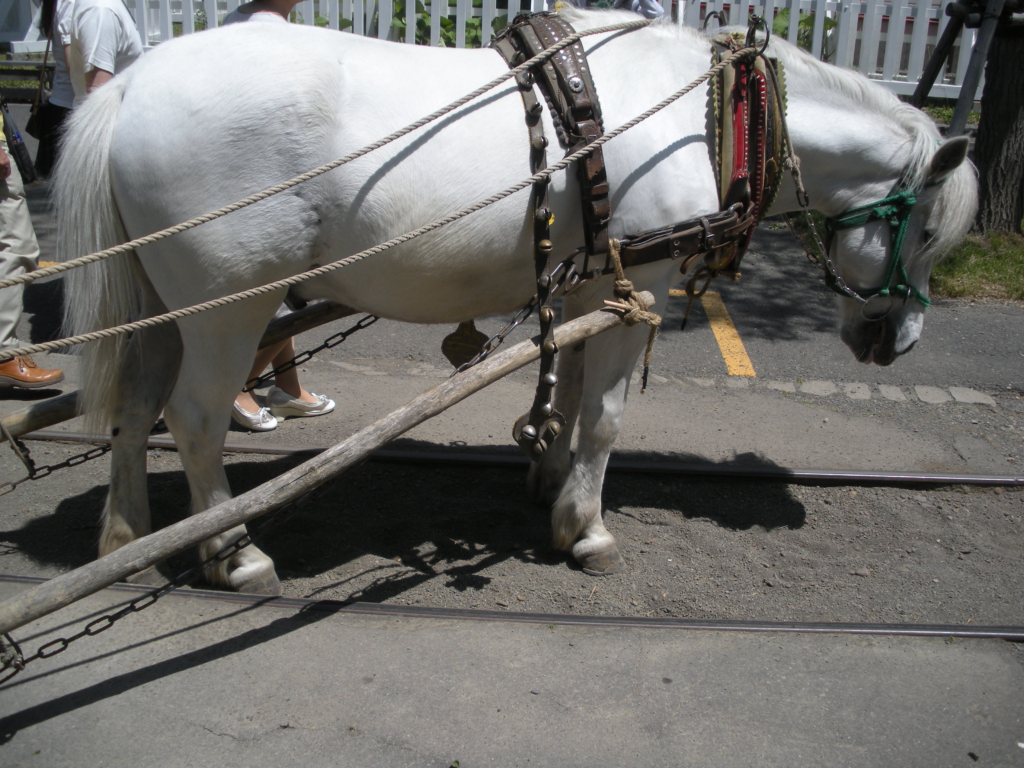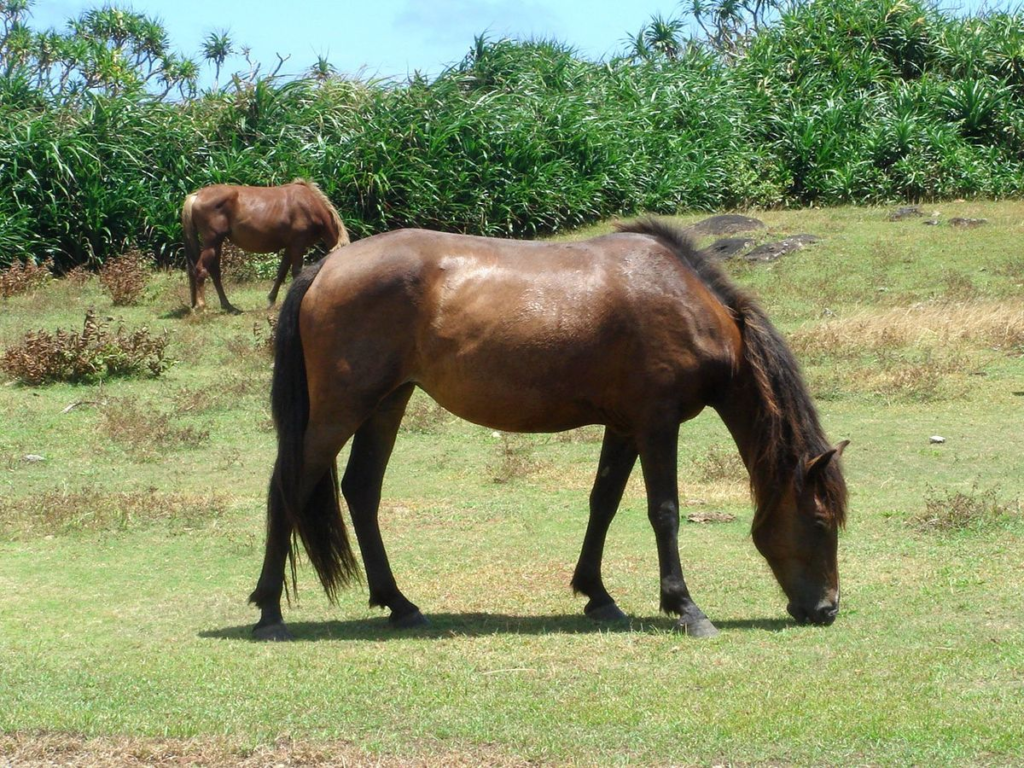Last Updated on September 15, 2023 by Fumipets
9 Japanese Horse Breeds (with Pictures)
Japanese horse breeds hold cultural significance in Japan and have adapted to serve various purposes throughout history.
They are part of the country’s heritage and continue to be cherished for their unique traits and contributions to Japanese society.
Japanese horse breeds are a diverse group of equines native to Japan. These breeds have evolved over centuries in response to Japan’s unique geography and climate. While there are several Japanese horse breeds, here’s a brief summary of a few notable ones:
Japanese Horse Breeds
Japan is often connected with a wide variety of creatures, some genuine and others legendary. However, horses are often excluded from the list. However, horses have a long history in Japan, having come to the country from Mongolia sometime between the third and sixth century BCE. However, there are valid reasons why the majority of people don’t image horses when they think of the native animals of Japan.
While many breeds had their origins in Japan, many of them are now extinct and the majority are endangered or vulnerable. There are now nine remaining Japanese breeds, but several have been bred with more recognizable western types. Even yet, several of these breeds are still quite rare.
The 9 Japanese Horse Breeds
In Japan, there are still eight recognized pure horse breeds. There are also unique breeds that were created by fusing Japanese and Western breeds rather than being entirely Japanese. We would still classify them as Japanese breeds as they are unique to Japan.
1. Dosanko

Hokkaido is another term for dosanko horses that you may hear more often. With an average height of 13 hands, they are considered to be ponies and are extremely little horses. Hokkaido ponies are the only recognized Japanese breed that aren’t regarded as endangered. In actuality, Hokkaido ponies make up roughly half of the remaining Japanese horses.
The hardiness and durability of this breed of horses contributes to its success. They are well adapted to the challenging Japanese terrain on which they thrive, and they have little trouble surviving the country’s severe winters.
Dosankos are well renowned for having a docile disposition, which makes them ideal for a variety of tasks, including agricultural labor, heavy hauling, and even pleasure riding. Although they do come in many other solid colors as well, Dosanko horses are most often roan in color.
2. Kadachime

Horses from the Kadachime breed are not exclusively Japanese. As required by the Meiji era, they have been mixed with western breeds to produce bigger horses. On the northeastern edge of Honshu island, at Cape Shiriya, you may observe wild Kadachime horses, however.
Despite not being a 100% pure Japanese breed, this breed has been recognized as a national treasure. They are still somewhat short despite attempts to mix them with bigger western horses; yet, they have robust, muscular bodies and are renowned for their extraordinary resistance to cold.
They were on the verge of extinction, like many Japanese breeds. There were just seven Kadachime horses left as of 2009. With more protection in place now, their population has grown to 40 horses or so.
3. Kiso

Kiso horses originate from Nagano, a city on the biggest and most populous of Japan’s islands, Honshu, which is where Nagano is located. The sole breed regarded as indigenous to Honshu Island is the Kiso horse. The Edo mandate during the Meiji era almost wiped off the Kiso horse breed, along with the majority of Japanese breeds. However, one stallion who eluded gelding is the only reason the breed is still around.
The Kiso Uma no Sato, a facility completely devoted to the preservation and continuation of the Kiso breed, has worked to ensure that all domesticated Kiso horses in Japan continue to exist.
The last few Kiso horses are here at this facility. You can even ride them for the proper fee, too! Even though a 15-minute ride on a Kiso horse costs 2,000 yen, the money goes toward preserving the breed. There are now just 30 of these horses left.
4. Misaki

Both farmed and wild Misaki horses may be found in Japan. Misaki wild horses are in a national park on the island of Kyushu, and Cape Toi is where you’ll most likely encounter them. Although these horses are wild creatures, they are used to people. Although you may look at the horses in the national park, you should never approach one since you are not allowed to touch them.
These horses are incredibly little and would be termed ponies in the west, at an average of 12 hands tall. The Takanabe Clan’s Akizuki family amassed a large number of wild horses for breeding stock in 1967, which was considered the formal beginning of the breed. even though it’s thought that they are related to horses that were initially introduced to the area some 2,000 years ago.
The Misaki breed was recognized as a Japanese National Treasure in 1953. However, they were so rare that just 52 remained in 1973, barely 20 years later, because of their low population. Thankfully, they are slowly but surely making a return. There are now around 120 Misaki horses still in existence.
5. Miyako

An old breed that has endured for ages is the Miyako breed. Even though the breed is in danger of going extinct, they have survived both World Wars and the Edo edict. Although it is uncertain how many Miyako horses are still alive, their future doesn’t seem promising. There were just 19 Miyako horses left as of 2001. This is an increase from the seven people who were living in 1983, but restoration efforts are progressing excruciatingly slowly.
Miyako horses were historically fairly modest in height and were mostly used in agriculture. In an effort to boost their size, the breed began to be mixed with foreign stallions at the commencement of World War II. While this did contribute to the Miyako horses being considerably bigger, averaging 14 hands, it did nothing to help the breed thrive, as numbers started to decline quickly after WWII.
6. Noma

The average height of Noma horses is only 11 hands. They are, nonetheless, rather tough creatures, particularly given their small stature. They are renowned for their agility as well. Because of their ability to carry a lot of weight and their tiny stature, they were traditionally utilized mostly as pack animals. However, they are now mostly used as tourist attraction, albeit sometimes being used as therapy horses for children.
From the island of Shikoku comes this breed. The name of the breed comes from the fact that they were originally from a particular area of the island once known as Noma. The military used the larger breed members, while smaller horses were assigned to farmers who mostly utilized them as pack animals.
Though the breed formerly grew in popularity, its numbers greatly decreased when it became illegal to mix little Japanese breeds in an effort to expand their size by mating them with bigger western varieties. There were just six distinct Noma horses surviving on the earth in 1978. In 1989, the Japanese government provided funding for the creation of a breeding reserve for the animal. There were 84 Noma horses in total in 2008 as a result of their population growth.
7. Tokara

Due to its origins in the Kogashima area of the Tokara Islands, the Tokara breed was first referred to as Kogashima. They were initially discovered in 1952, and because of how significant their discovery was, Kagoshima promptly designated them as a national monument. There were just 43 Tokara horses left when they were found. Sadly, as a result of automation, their population immediately began to fall. On the island, just one Tokara horse existed as of 1974.
Thankfully, the saga of the breed does not stop there. The only Tokara horse was brought to Nakanoshima, where there were a few Tokara horses that had been taken from the Tokara Islands in the past. They grew as a result of focused breeding efforts, and there are now more than 100 Tokara horses.
Tokara horses are stout, powerful, and labor-intensive. However, the lack of demand for hard-working horses in Japan prevents them from being often employed for riding, labor, or any other purpose, which is a key factor in the breed’s demise in the first place.
8. Taishu

This breed is incredibly uncommon and old. The breed is said to have originated in the 700s. They come from the Korea Strait’s Tsushima Island. The breed has been protected since 1979, and efforts to expand its population are underway. However, it’s difficult to assess the effectiveness of efforts since it’s unclear how many Taishu horses are still in existence.
Taishu horses are huge for a Japanese breed but still tiny by western standards, standing between 12 and 14 hands. They were traditionally used for riding, draft labor, and pack work, among other things.
9. Yonaguni

The Edo decree that led to the extinction of many other pure Japanese horse breeds mostly spared the Yonaguni breed. They are one of the oldest and purest existing Japanese breeds as a result. They have never been mixed with bigger western horses and are just 11 to 12 hands tall.
These horses’ genetic similarity to Miyako and Tokara horses has been shown. Though precise numbers are unclear, they are now thought to be highly endangered with just a few specimens left.
Why Are Japanese Horse Breeds so Rare?
Japan has had horses for well over a thousand years. But attempts were made to improve the size of the comparatively tiny Japanese horses by mating them with considerably bigger breeds from the West during the Meiji period, which ran from 1868 to 1912. This seemed to be the answer for Japan, which required huge horses for draft labor.
To that purpose, castration, also known as gelding, was mandated for pure stallions of Japanese breeds. The Edo mandate was the name of this directive. To produce these new, bigger horses, western breeds were mixed with Japanese mares, which are female horses. While this did achieve the desired outcome, there was a significant unintended consequence as well. Many of the pure Japanese horse breeds were entirely disappeared by the end of the Meiji period and would never be seen again.
Fortunately, not all Japanese breeds were wiped off in this way. Only a few specific breeds in certain areas of the nation were able to avoid this destiny; these were mostly the breeds that were restricted to the southern and northern islands and capes.
Differences Between Japanese and Western Breeds
Every horse breed is different and has certain characteristics that are unique to it, but all the Japanese breeds have a few characteristics in common that make them distinct from the varieties that are often seen in the west.
For instance, Japanese horses are still typically significantly smaller than western breeds despite attempts during the Meiji period. They are often even categorized as ponies.
The very hard hooves of Japanese breeds are another notable distinction. Horses in the west wear metal shoes to protect their feet. However, since Japanese horses’ hooves are so tough, they seldom ever need to be horseshoed. Some of these horses are given straw boots in the coldest regions, which is a far cry from the harsh metal shoes we use in the west.
Prevalence is likely the key distinction between Japanese and western breeds of horses. Just a few Japanese horses remain in existence. The majority of Japanese breeds are at risk of becoming extinct and are considered to be endangered. Many of these breeds have been designated as prefectural treasures to conserve them, but their numbers are still declining.
Wild and Domestic Horses in Japan
Although there are not many horses in Japan, both farmed and wild horses may still be found there. Numerous wild horses may be found in national parks, where they are safeguarded and have long been spotted roaming free. There are several breeds that are unique to certain areas of the nation and are found there.
You may discover domestic and wild populations of several Japanese breeds. However, the population of some of these breeds is so small that it is only in the single digits. Hopefully, these breeds will make a return and not disappear completely thanks to restoration efforts.
Conclusion
Although horses may not be a species you often identify with Japan, the nation has a long and rich history with them. There are still a number of Japanese horse breeds that can be found all around the country of Japan as well as on several of its coastal islands.
Many of these Japanese breeds are slowly but steadily making a return, despite the fact that they almost went extinct as a result of the Meiji-era Edo requirement that all stallions must be gelded in order for mares to breed with bigger western varieties. Hopefully, some of these Japanese breeds will one day be exempted from the severely endangered classification that most of them share.
Frequently Asked Questions
What are some notable Japanese horse breeds?
Japanese horse breeds include the Hokkaido Pony, Noma Pony, Misaki Pony, and Taishu Horse. These breeds are known for their adaptability to the harsh Japanese climate.
What is the history of Japanese horse breeds?
Japanese horses have been bred for centuries and played significant roles in agriculture, transportation, and samurai warfare. They are deeply embedded in Japanese culture and history.
What are the characteristics of Japanese horse breeds?
Japanese horse breeds are typically small in size, known for their endurance, and often have a stocky build. They are well-suited to the rugged terrain of Japan.
Are Japanese horse breeds endangered?
Yes, some Japanese horse breeds are endangered due to declining populations and modernization. Conservation efforts are in place to protect and preserve these breeds.
What role do Japanese horse breeds play today?
While less common in modern life, Japanese horse breeds are still used in cultural events, such as festivals and parades. Additionally, they are sometimes utilized in equestrian sports and for recreational riding.
For more in-depth information, you can refer to the provided sources, especially source #5, which may contain detailed insights into Japanese horse breeds.


















